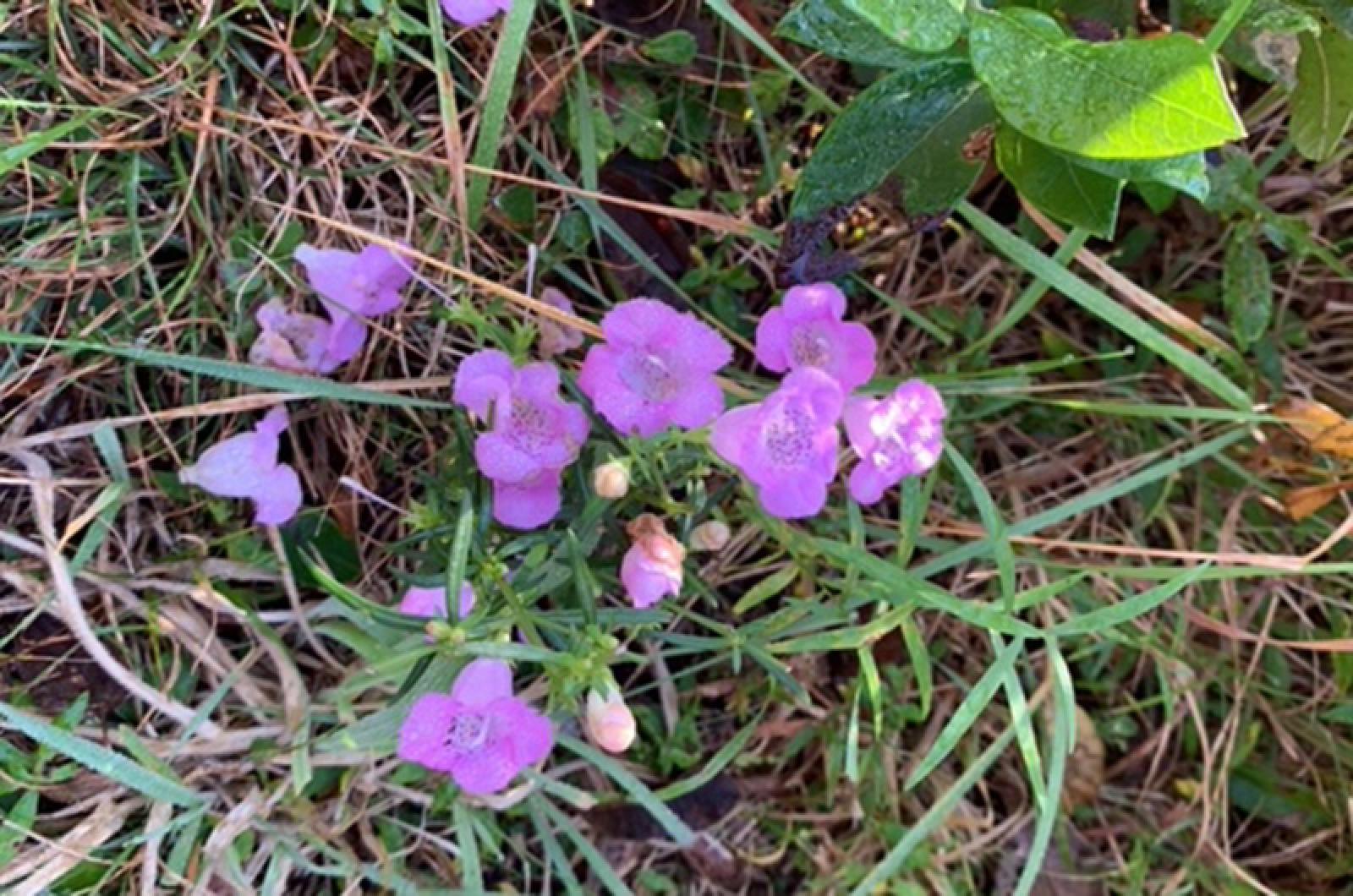True or false?
For the agalinis species, it is true and false. After all, binaries are so yesterday.
False foxglove, also known as gerardia, is and isn’t foxglove. The name says it all, though it is not the traditional plant one thinks of when foxglove comes to mind. The large and stately garden foxglove hails from Europe and is not native to this country. While commonly seen here now, that species is in the genus Digitalis and isn’t related to our small and mighty local false foxglove.
It is also true that false foxglove is blooming, but false is right there in its name. Consider it a non-binary plant.
Non-binary can also describe false foxglove growing habits. It is rooted in duality. Known as a hemiparasite, or half-way parasite, false foxglove can obtain nutrients in two ways. With green leaves, it can photosynthesize at will. It can also associate with other plants and use them for its nutritional needs.
False foxglove practices parasitism using its haustoria. Haustoria are specialized root projections that can penetrate the tissues of other plants and allow it to take nutrients (sugars and proteins) from that host. In the case of false foxglove, host plants can be certain grasses and even trees.
But it’s not all taking and no giving for false foxglove. Another species, the common buckeye, needs this species. This butterfly is designated “common to uncommon” (another peculiar paradox), and has and will use false foxglove as a larval plant.
According to Butterflies of Massachusetts, “In New England and the mid-Atlantic, the most common host plant for the summer brood in the nineteenth century was probably purple gerardia (Agalinus purpurea),” it being “the favorite food of the caterpillar.” The adult butterfly is also known to partake of its nectar.
Purple fall foxglove and its brethren are important for long-tongued bees too, which are adapted to this flower’s long and narrow tubular blossom. Bumblebees, leaf cutting bees and digger bees will belly up to the false foxglove bar for a drink. As a late-season species that was found flowering in a field last week, false foxglove might just be last call for pollinators that haven’t yet readied themselves for the coming frost.
Frances Theodora Parsons, whose pen name was Mrs. William Starr Dana, noted and described false foxglove with affection. This naturalist wrote the first field guide to North American wildflowers, published in 1893. In How to Know the Wildflowers, she shared that in late summer, purple gerardia flowers brightened “the low-lying ground along the coast and in the neighborhood of the Great Lakes. The sandy fields of New England and Long Island are oftentimes a vivid mass of color owing to their delicate blossoms.”
It is absolutely true that this wildflower comes late in the season, spreads purple pleasure for those who notice it, and is a necessary nectarous boon to butterflies and bees. And false is what it’s called, that’s true; but one would not be a false prophet in singing its true praises.
Suzan Bellincampi is islands director for Felix Neck Wildlife Sanctuary in Edgartown and the Nantucket Wildlife Sanctuaries. She is also the author of Martha’s Vineyard: A Field Guide to Island Nature and The Nature of Martha’s Vineyard.







Comments
Comment policy »